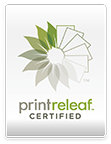For many years, umbilical cord blood has been used to treat neurological conditions, such as Cerebral Palsy and Traumatic Brain Injuries. The FamiCord Group are so proud to be a part of a recent breakthrough treatment, showing great promise for the future of neurological treatments using umbilical cord blood stem cells – Cord Blood Rescue After Cardiac Arrest (parentsguidecordblood.org)
A previously healthy little boy was admitted to hospital with vomiting, and it was discovered that a loop of his intestine had twisted around itself, which created a bowel obstruction. This lead to a part of his intestine dying, causing a massive infection which eventually led to a cardiac arrest; taking over 25 minutes to restore a pulse. Sadly, although the boy survived the cardiac arrest, he was diagnosed as being in a persistent vegetative state. Brain MRIs showed severe injury due to the lack of oxygen during the cardiac arrest. The doctors stated that in a case like this, the “neurological prognosis of the patient… was ominous if not hopeless.” At best, such children only have minimal awareness of their surroundings at a follow up four years later.
His parents were desperate to try any therapy, so they contacted Vita 34 (part of the FamiCord Group), the cord blood bank where they had stored their son’s cord blood. His own privately stored cord blood sample was released for the boy to receive an infusion of the cord blood, taking place 9 weeks after the cardiac arrest with follow up tests for 40 months after the infusion.
Within just 1 week, he began to respond to acoustic stimuli. Within 2 months, he was discharged from the rehabilitation centre, and some of his eyesight had restored.
At the 5 month check, brain electrical activity was normal. One year after the infusion, significant improvements were seen in fine motor control of the hands, social interaction, and cognition. He could sit unsupported but required support to stand, as he still suffered from muscle weakness, particularly in his legs.
By the final 40 month check up, he was able to eat independently, his fine motor skills had improved to such an extent that he could steer a remote controlled car and he was pulling himself into standing position and walking independently in a gait trainer.
In conclusion, this “remarkable functional neuro-regeneration is difficult to explain by intense active rehabilitation alone and suggests that autologous cord blood transplantation may be an additional and causative treatment of paediatric cerebral palsy after brain damage.”
Banking your newborn’s umbilical cord blood at birth is a simple, quick way to help safeguard your baby’s future health in case the unexpected happens, giving parents peace of mind.
Please complete the short form below to receive a simple, comprehensive Free Guide to Cord Blood and Tissue Banking.
Reference:
- https://www.ncbi.nlm.nih.gov/pmc/articles/PMC3671311/
- https://parentsguidecordblood.org/en/news/cord-blood-rescue-after-cardiac-arrest



